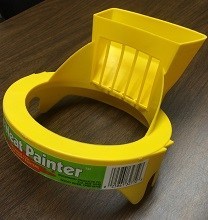One of the most critical components of an injection mold is being able to run an uninterrupted cycle during the injection molding process.

One of most common causes of an inconsistent cycle is having a part not being ejected from the injection mold. There are all types of ways to eject a part from an injection mold. The most common is with the use of ejector pins. These pins can be purchased off the shelf from a number of injection mold making supply companies. These pins are precision ground and usually nitrided to prevent galling. They come in a variety of diameters and lengths. Ejector pins slide through tight tolerance holes that are machined in the injection mold. They are placed in areas where the mold designer thinks they are needed to eject the part out of the mold freely. The ejector plate that houses the ejector pins or other types of ejectors for injection molds, usually has guided ejection installed. This prevents the ejectors from getting misaligned and causing damage to the injection mold.
There are also different styles of ejector systems used in the injection molding process. Lifters are used when an undercut must be ejected. These lifters move on an angle during the ejection phase of the injection molding cycle. A stripper ring is commonly used for round parts. It is a ring that is on the diameter of what the part is and pushes the whole part out. The stripper can also be used as a square ring for square or rectangular parts. Stripper plates are used for larger parts and are the same size as the other mold plates.
The use of an air poppet can also be used to help assist in the ejection of a part. It consists of a pin that has a head that is on an angle that moves up with air and back with a spring. The poppet sometimes is also used to break a vacuum on a part that is created on occasions. A blast of air is also used sometimes to aid in ejecting the part.
Additionally, putting draft on a cavity or core is also critical in aiding the ejection of a part. The use of special coatings that are applied to the cavity and core aid in the release of the part.
Experience is a big asset on having the knowledge as far as knowing where there may be problems during the ejection stage of injection molding your part.
